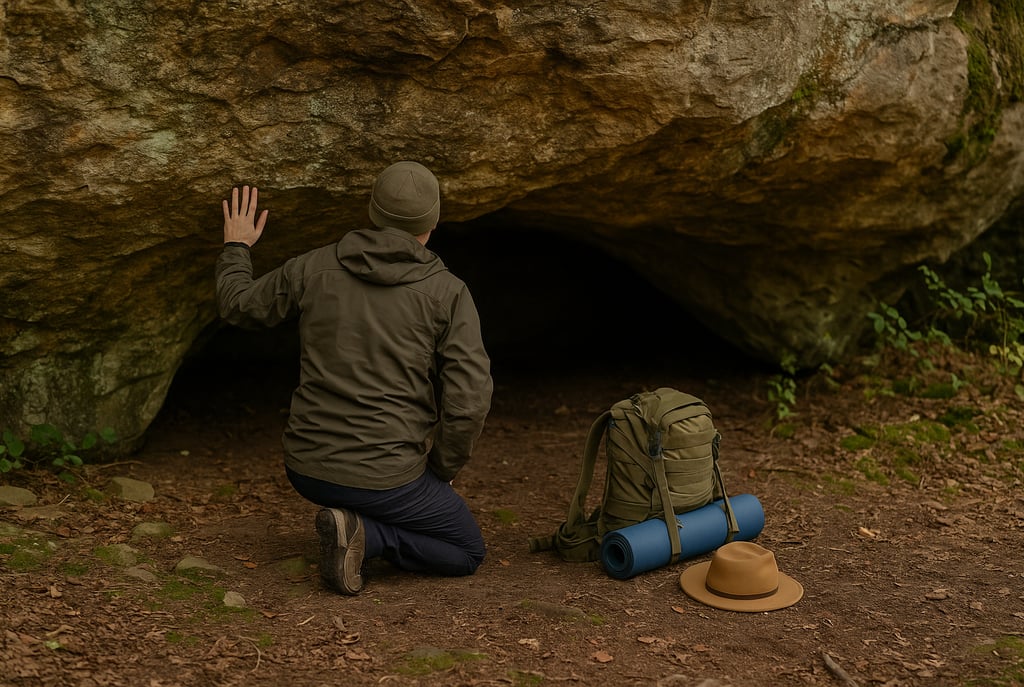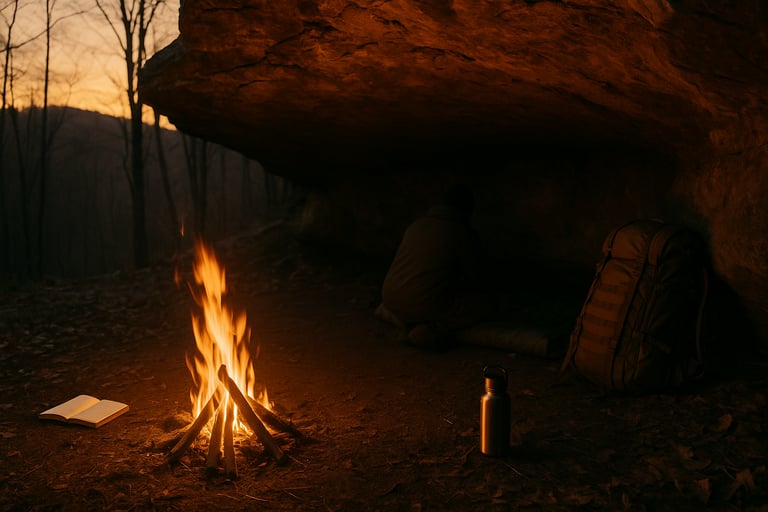How to Build a Rock Shelter for Wilderness Survival
Learn how to make a rock shelter for survival in the wild. This beginner-friendly guide covers site selection, insulation, safety tips, and how to use natural rock formations for protection and warmth.


How to Build a Rock Shelter for Wilderness Survival
What Is a Rock Shelter and Why Use One?
A rock shelter is one of the most reliable and low effort survival shelters you can find in the wild — especially in mountainous, desert, or canyon terrain. Instead of building a structure from scratch, you use naturally existing rock formations like overhangs, boulder clusters, or cliff recesses to shield yourself from the elements. These formations offer protection from wind, rain, and even snow, and can keep you hidden if needed.
Rock shelters are especially useful when you're short on time, energy, or resources. If you find yourself lost, injured, or caught in unexpected weather, knowing how to spot and modify a rock shelter can make the difference between discomfort and real danger.
How to Find the Right Spot for a Rock Shelter
Start by scanning your surroundings for outcrops, shallow caves, or boulders leaning against each other. You're looking for something that already has at least one wall and a “roof” formed by the rocks. Make sure the area is structurally sound — avoid shelters with loose or cracked stone above you.
Always check for animal activity, including droppings, nests, or tracks. You don’t want to accidentally move into a predator’s den or disturb local wildlife.
Improving Insulation and Weather Protection
Natural rock shelters may offer a strong base, but they often need some tweaks to make them comfortable. Use branches, bark, or leaves to block open sides and create windbreaks. You can pile up brush or even your pack to create a barrier from cold air. If rain or snow is possible, lay out a tarp (if you have one) at a sloped angle or add layers of natural material over gaps to keep moisture out.
Inside the shelter, layer dry leaves, pine needles, or your emergency blanket on the ground to insulate against cold rock. Elevating yourself off the ground just a few inches can make a big difference in body heat retention.
Rock shelters offer excellent natural protection, but they’re even more effective when paired with survival strategies like building a debris hut shelter for added insulation or learning how to build a bough bed shelter to stay warm and off the cold ground. Knowing how to combine shelter types and techniques is key when you're facing freezing temperatures or extended exposure.
Fire Safety and Ventilation Tips
If you plan to build a fire inside or near your rock shelter, ventilation becomes critical. Never build a fire inside an enclosed rock cavity — smoke buildup can be deadly. Ideally, your shelter should be partially open on one side to allow airflow. Build your fire just outside the entrance so heat radiates inward while smoke escapes.
Stacking a few reflective rocks behind the fire can bounce heat back into your shelter, especially useful during cold nights. Be cautious of sparks and make sure your sleeping area is well clear of any flames or embers.
Fire near a rock shelter can make a major difference, especially if you’ve also mastered techniques like starting a fire with flint and steel or using the fire plough method. These traditional methods don’t rely on lighters or matches, giving you more options when modern gear fails.
Final Thoughts: Making the Most of Nature’s Shelter
A well chosen rock shelter can provide immediate protection without requiring much construction. With a little improvisation and attention to safety, it can become a life-saving option in harsh conditions. Whether you're camping, hiking, or dealing with a true survival situation, knowing how to build a rock shelter with what nature provides is a foundational wilderness skill worth learning.


© 2025. All rights reserved About | Privacy Policy | Terms and Conditions | Affiliate Disclosure | Disclaimer


